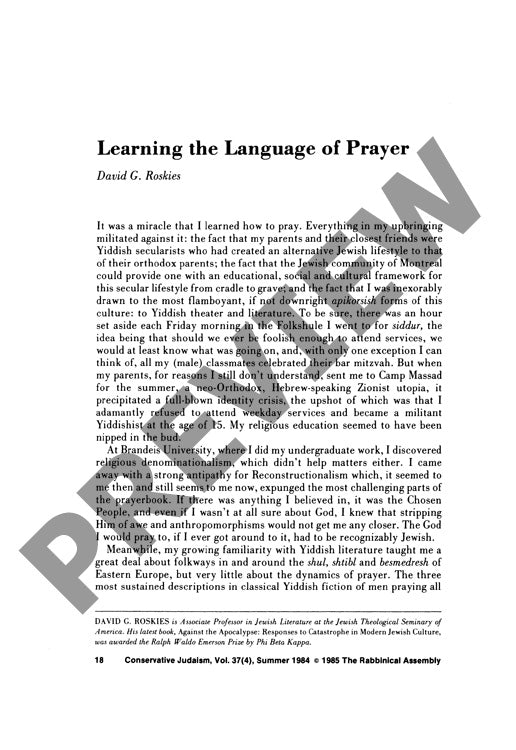Learning the Language of Prayer
Couldn't load pickup availability
Sacred language has the power to transcend ordinary speech, yet many contemporary Jews struggle to find authentic connection to traditional prayer. Through an autobiographical lens enriched by literary and liturgical analysis, Roskies charts his evolution from secular Yiddish roots to meaningful Jewish prayer practice. His experience with Havurah Shalom reveals three crucial elements that facilitate spiritual engagement: intimate prayer groups, flexible practices, and emphasis on personal expression over technical precision. The transformative role of niggunim (wordless melodies) emerges as a vital bridge between spontaneous intention (kavvanah) and fixed liturgical requirements (keva). Close examination of Sabbath liturgy, particularly the Nishmat prayer and Kedushah, illuminates prayer's metalinguistic function as human language striving to echo angelic discourse. Drawing on personal reflection, Yiddish literary sources, and liturgical texts, Roskies demonstrates how gradual immersion through chanting, intentionality, comprehension, and community participation can transform human language into a divine instrument. These findings offer insight into both contemporary Jewish spiritual practice and the broader challenge of maintaining authentic religious experience in a secular age.

More Information
-
Physical Description
-
Publication Information
Published 1984
ISBN
-
Publication Credits
David Roskies

